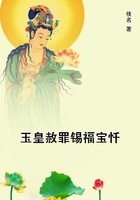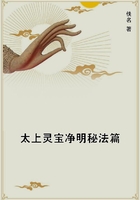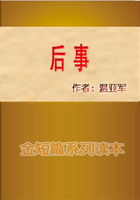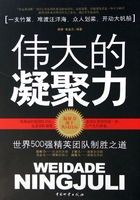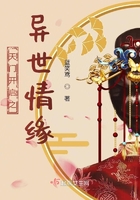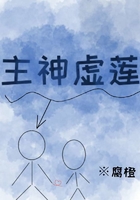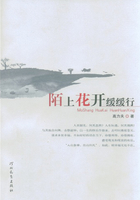Not only is there a whole series of forms connecting the anatomical structure of the Cordaiteae with that of the Lyginodendreae among Pteridosperms, but a still more important point is that the seeds of the Cordaiteae, which have long been known, are of the same Cycadean type as those of the Pteridosperms, so that it is not always possible, as yet, to discriminate between the seeds of the two groups. These facts indicate that the same fern-like stock which gave rise to the Cycadophyta and through them, as appears probable, to the Angiosperms, was also the source of the Cordaiteae, which in their turn show manifest affinity with some at least of the Coniferae. Unless the latter are an artificial group, a view which does not commend itself to the writer, it would appear probable that the Gymnosperms generally, as well as the Angiosperms, were derived from an ancient race of Cryptogams, most nearly related to the Ferns. (Some botanists, however, believe that the Coniferae, or some of them, are probably more nearly related to the Lycopods. See Seward and Ford, "The Araucarieae, Recent and Extinct", "Phil. Trans. Royal Soc." Vol. 198 B.
1906.)
It may be mentioned here that the small gymnospermous group Gnetales (including the extraordinary West African plant Welwitschia) which were formerly regarded by some authorities as akin to the Equisetales, have recently been referred, on better grounds, to a common origin with the Angiosperms, from the Mesozoic Cycadophyta.
The tendency, therefore, of modern work on the palaeontological record of the Seed-plants has been to exalt the importance of the Fern-phylum, which, on present evidence, appears to be that from which the great majority, possibly the whole, of the Spermophyta have been derived.
One word of caution, however, is necessary. The Seed-plants are of enormous antiquity; both the Pteridosperms and the more highly organised family Cordaiteae, go back as far in geological history (namely to the Devonian) as the Ferns themselves or any other Vascular Cryptogams. It must therefore be understood that in speaking of the derivation of the Spermophyta from the Fern-phylum, we refer to that phylum at a very early stage, probably earlier than the most ancient period to which our record of land-plants extends. The affinity between the oldest Seed-plants and the Ferns, in the widest sense, seems established, but the common stock from which they actually arose is still unknown; though no doubt nearer to the Ferns than to any other group, it must have differed widely from the Ferns as we now know them, or perhaps even from any which the fossil record has yet revealed to us. iii. THE ORIGIN OF THE HIGHER CRYPTOGAMIA.
The Sub-kingdom of the higher Spore-plants, the Cryptogamia possessing a vascular system, was more prominent in early geological periods than at present. It is true that the dominance of the Pteridophyta in Palaeozoic times has been much exaggerated owing to the assumption that everything which looked like a Fern really was a Fern. But, allowing for the fact, now established, that most of the Palaeozoic fern-like plants were already Spermophyta, there remains a vast mass of Cryptogamic forms of that period, and the familiar statement that they formed the main constituent of the Coal-forests still holds good. The three classes, Ferns (Filicales), Horsetails (Equisetales) and Club-mosses (Lycopodiales), under which we now group the Vascular Cryptogams, all extend back in geological history as far as we have any record of the flora of the land; in the Palaeozoic, however, a fourth class, the Sphenophyllales, was present.
As regards the early history of the Ferns, which are of special interest from their relation to the Seed-plants, it is impossible to speak quite positively, owing to the difficulty of discriminating between true fossil Ferns and the Pteridosperms which so closely simulated them. The difficulty especially affects the question of the position of Marattiaceous Ferns in the Palaeozoic Floras. This family, now so restricted, was until recently believed to have been one of the most important groups of Palaeozoic plants, especially during later Carboniferous and Permian times.
Evidence both from anatomy and from sporangial characters appeared to establish this conclusion. Of late, however, doubts have arisen, owing to the discovery that some supposed members of the Marattiaceae bore seeds, and that a form of fructification previously referred to that family (Crossotheca) was really the pollen-bearing apparatus of a Pteridosperm (Lyginodendron). The question presents much difficulty; though it seems certain that our ideas of the extent of the family in Palaeozoic times will have to be restricted, there is still a decided balance of evidence in favour of the view that a considerable body of Marattiaceous Ferns actually existed. The plants in question were of large size (often arborescent) and highly organised--they represent, in fact, one of the highest developments of the Fern-stock, rather than a primitive type of the class.
There was, however, in the Palaeozoic period, a considerable group of comparatively simple Ferns (for which Arber has proposed the collective name Primofilices); the best known of these are referred to the family Botryopterideae, consisting of plants of small or moderate dimensions, with, on the whole, a simple anatomical structure, in certain cases actually simpler than that of any recent Ferns. On the other hand the sporangia of these plants were usually borne on special fertile fronds, a mark of rather high differentiation. This group goes back to the Devonian and includes some of the earliest types of Fern with which we are acquainted. It is probable that the Primofilices (though not the particular family Botryopterideae) represent the stock from which the various families of modern Ferns, already developed in the Mesozoic period, may have sprung.


